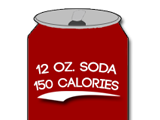Debating Diets: What is the pescatarian diet?

Thinking about starting a new diet? While the amount of information available can be overwhelming, it’s possible to find a diet that is safe, suitable and effective for your lifestyle.
Erika Zoellner, senior registered dietitian at Baylor College of Medicine, discusses what you need to know about the pescatarian diet.
How does the pescatarian diet work?
The pescatarian diet is a vegetarian eating style with the inclusion of fish and seafood. The seafood might include saltwater fish (such as salmon or tuna), shellfish (shrimp, oysters, clams, etc.) or freshwater fish (like trout or perch). It is a nutrient-rich dietary pattern that emphasizes plant-based foods like vegetables, fruits, whole-grains, nuts and seeds, and it incorporates omega-3-containing seafood for protein. This dietary pattern is rich in vitamins, minerals, fiber and phytochemicals and is low in saturated fat, which is associated with decreased risk for cardiovascular disease and other health conditions. While the pescatarian diet is not extensively researched, it mirrors the Mediterranean dietary pattern, which has been well-researched and found to reduce the risk of several chronic conditions.
What are recommended foods? Discouraged foods?
The diet recommends plant-based foods and discourages meat and poultry. In some instances, an individual may also exclude dairy and/or eggs, but this is not a requirement of the pescatarian diet. There are no defined limits on how often a pescatarian can incorporate fish or seafood. An individual following the pescatarian diet may incorporate fish occasionally or at every meal based on their preference.
Who should avoid this diet?
A concern of this diet might be the amount of mercury from certain types of fish or the overall higher consumption of fish. Women who are pregnant or breastfeeding and young children should be mindful of the mercury content in various fish consumed. Plant-based diets also need to be balanced and varied in order to be healthy, as there are some nutrients that are limited in vegetarian diets: vitamin B12, vitamin D, iron, calcium, zinc and omega-3s; however, with the inclusion of seafood and dairy in the pescetarian diet versus a meatless vegetarian diet, the risk of these deficiencies lessen.
This diet can naturally be lower in calories or decrease portion sizes because it provides satiety. Individuals who need weight gain may need to consult with their dietitian to ensure they are meeting their nutritional needs.
What kind of physiological changes or side effects should be expected?
Individuals who choose to follow a pescatarian diet may see improvement in their cholesterol levels and other markers of metabolic health. The diet might help with weight management, as the higher fiber and leaner proteins are more satiating for portion control. It might also lead to better glucose management and improvements in Hgb A1c. The American Diabetes Association (per the ADA Consensus Report) ranks plant-based diets like vegetarian and Mediterranean as the top diets to not only improve blood glucose but also lessen the risk of cardiovascular disease (as diabetics have an increased risk for CVD and suffering a cardiovascular event). This eating pattern can also help lower inflammation and is associated with lower risk of certain cancers (like colon cancer).
What else should people know before considering this diet?
This diet is a great pattern to follow but can take some planning to ensure you craft a well-rounded, balanced pescatarian diet with enough nutrients. It can also be a more expensive diet to follow given its inclusion of higher-cost seafood. Additionally, while the diet can be very healthful, there are many plant-based items marketed as being more nutritious but may be higher in salt, added sugar or saturated fats.
Learn about our nutrition and other primary care services from Baylor Medicine.
By Homa Shalchi



